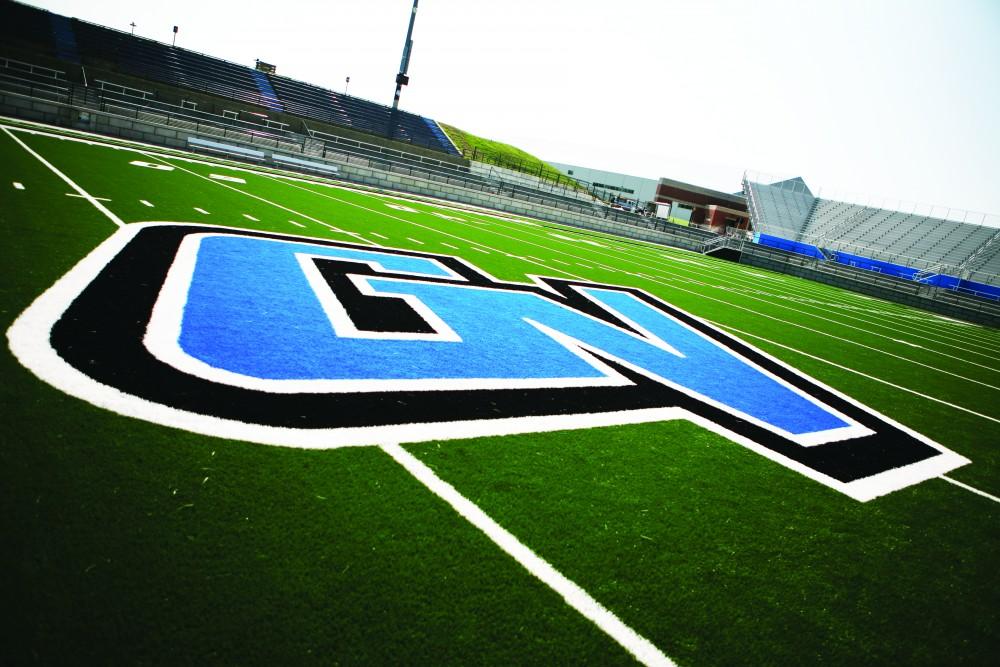Student Recreation Fields first certified sustainable site in MI

GVL / Robert Mathews 2012 GVSU Football Media Day
Dec 5, 2012
The Grand Valley State University’s Student Recreation Fields have become the first Michigan location certified as a sustainable site, and is one of the first in the country to be certified as part of the pilot project SITES.
SITES, the Sustainable Sites Initiative, is an interdisciplinary partnership led by the American Society of Landscape Architects, the Lady Bird Johnson Wildflower Center of The University of Texas in Austin, and the United States Botanic Garden.
It is modeled after the U.S. Green Building Council’s LEED program and was formed to create voluntary national guidelines and performance benchmarks for sustainable land design, construction and maintenance practices.
“This recognition is evidence of our project’s achievement in demonstrating an innovative and successful application of sustainable land design and development practices through the SITES Guidelines and Performance Benchmarks 2009,” said James Moyer, LEED AP and associate vice president for Facilities Planning at GVSU. “Our participation in the pilot program has been invaluable in testing and improving the SITES rating system with a diverse set of projects.”
The program has only accepted one other site in Michigan as part of its pilot endeavor, and GVSU was the first location to receive its two-star certification. Other projects involved in the pilot program span 34 states along with Canada, Iceland and Spain.
The fields were selected as part of the pilot program in 2010 and dedicated in October 2011. More than 150 other projects were also chosen to help revise a performance rating system used by SITES. The project was judged on categorical efforts that included site selection; pre-design assessment and planning; water, soil and vegetation; material selection; human health and wellbeing; operations and maintenance; and monitoring and innovation.
Encompassing 65 acres of land that include rugby, lacrosse and two softball fields, along with a track throws area, a 400 meter track, a stormwater management system and picnic shelters, the fields provide increased recreational space for the increasing number of students involved in athletics and clubs on campus.
For more information visit www.sustainablesites.org/pilot.





















